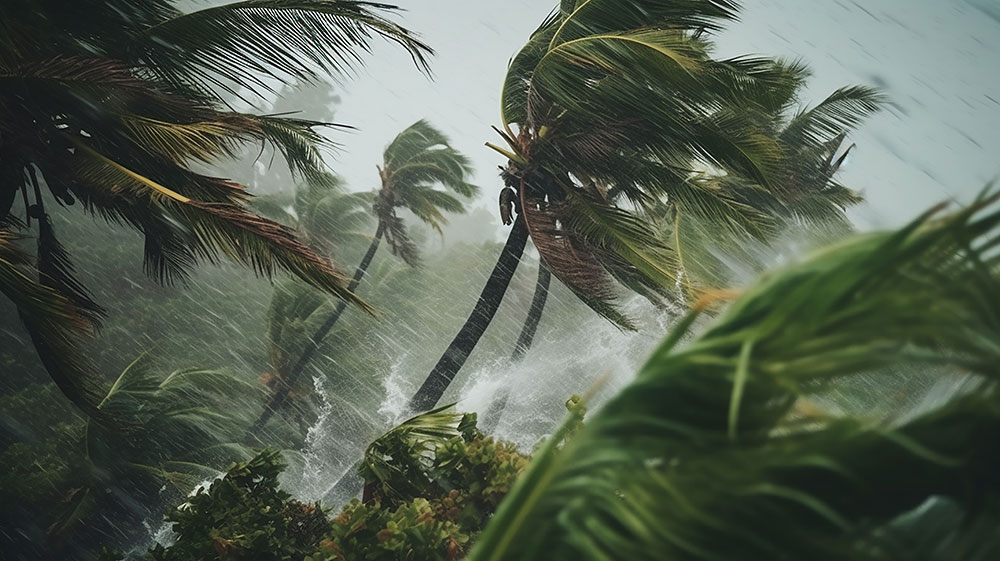Coverage from wind and hail damage is often excluded from standard home insurance policies for homes that live in high-risk counties (such as along the Texas coast). If this type of damage has been excluded on your homeowner’s policy, you can purchase separate windstorm insurance to protect your home in case it gets damaged by wind and hail. You can do this through a special wind-only insurer or the Texas Wind Insurance Association (TWIA). According to this organization, the cost of getting this type of coverage is about $1,750 a year.

Here are some common questions people ask about windstorm insurance and Texas windstorm certification.
What is Texas windstorm insurance?
Texas windstorm insurance is a separate policy that you can purchase if you live in a coastal area that’s considered to be “high risk,” where wind and hail coverage is often excluded from standard home insurance policies. You can get this type of coverage through a private insurer or the TWIA.
How does windstorm insurance work in Texas?
If your home has been damaged by wind or hail, you will need to file a claim with your windstorm insurance provider. And if your claim has been approved, you will be required to pay a deductible (which is the amount you’ll have to pay out of pocket before the insurance company will cover the damage). This will either be a flat dollar amount or a percentage of your policy’s dwelling coverage limit, which is usually 1-5%.
Is windstorm insurance required in Texas?
Texas Law doesn’t require you to get windstorm insurance, but you will most likely be required to purchase a wind-only policy if you have a mortgage on your home and your home insurance policy doesn’t cover wind damage. This is because most mortgage lenders require borrowers to have home insurance (including coverage for wind damage) so they can protect their investments. And if you live in an area that’s considered to be a high-risk flood zone, your lender may also require you to purchase flood insurance. So in the most high-risk areas in Texas, you could end up having three types of insurance policies (home, windstorm, and flood).
What Texas counties are considered the highest risk for windstorm damage?
The following counties are considered to be the most high-risk areas for hurricanes and other wind-related perils:
• Aransas.
• Brazoria.
• Calhoun.
• Cameron.
• Chambers.
• Galveston.
• Harris (parts of the county east of Highway 149).
• Jefferson.
• Kenedy.
• Kleberg.
• Matagorda.
• Nueces.
• Refugio.
• San Patricio.
• Willacy.
If you live in any of these counties, you might be able to get coverage through the TWIA if you meet their eligibility requirements.
What are the Texas windstorm certification requirements?
To qualify for wind and hail insurance through the TWIA, your home must be certified for meeting the windstorm building code requirements in your area. This is called a Windstorm Certificate of Compliance, which you can get through the Texas Department of Insurance (TDI). Depending on your home and when the improvements were completed, the department issues two types of certificates:
- WPI-8: Issued for new and ongoing improvements.
- WPI-8-E: Issued for completed improvements.
You can go to the TDI website to see if your home has a certificate on file. Otherwise, you can apply for a certificate on the TDI website.
What are the Texas windstorm certification requirements for roofs?
Here are the Texas windstorm certification requirements for roofs with asphalt shingles:
- They must be fastened to roof decks that have been solidly sheathed.
- They must be used on roof decks with a slope of at least 2 vertical units in 12 units horizontal (2:12) and up to 4 units vertical in 12 units horizontal (4:12).
- They must be installed with fasteners that aren’t overdriven or crooked.
- They must be tested according to ATSM D 3161, Class F. The wrappers must also have a label that indicates compliance with these standards.
- They must be installed according to installation instructions from the manufacturer.
The Texas windstorm requirements for the roof deck sheathing include:
- Having a minimum of 7/16″ OSB (14/32″ of plywood).
- Being nailed 4″ o.c. edges and 6″ o.c. edges in field. For gable ends, the rafter and fly bang are considered edges.
- The fasteners being used are at least 8d common (0.131″ x 2.5″).
The windstorm requirements for the underlayment include the following:
- Slopes that are greater than 4:12 must have a layer of felt that has been fastened with corrosion-resistant fasteners.
- Slopes that are greater than 2:12 and less than 4:12 must have half-lapped felt that has been fastened with corrosion-resistant fasteners.
- Any metal drip edge must be fastened 10″ o.c.
If you’re looking for one of the best roofers in Corpus Christi to make sure your roof meets Texas windstorm certification requirements, be sure to reach out to Bayfront Roofing.